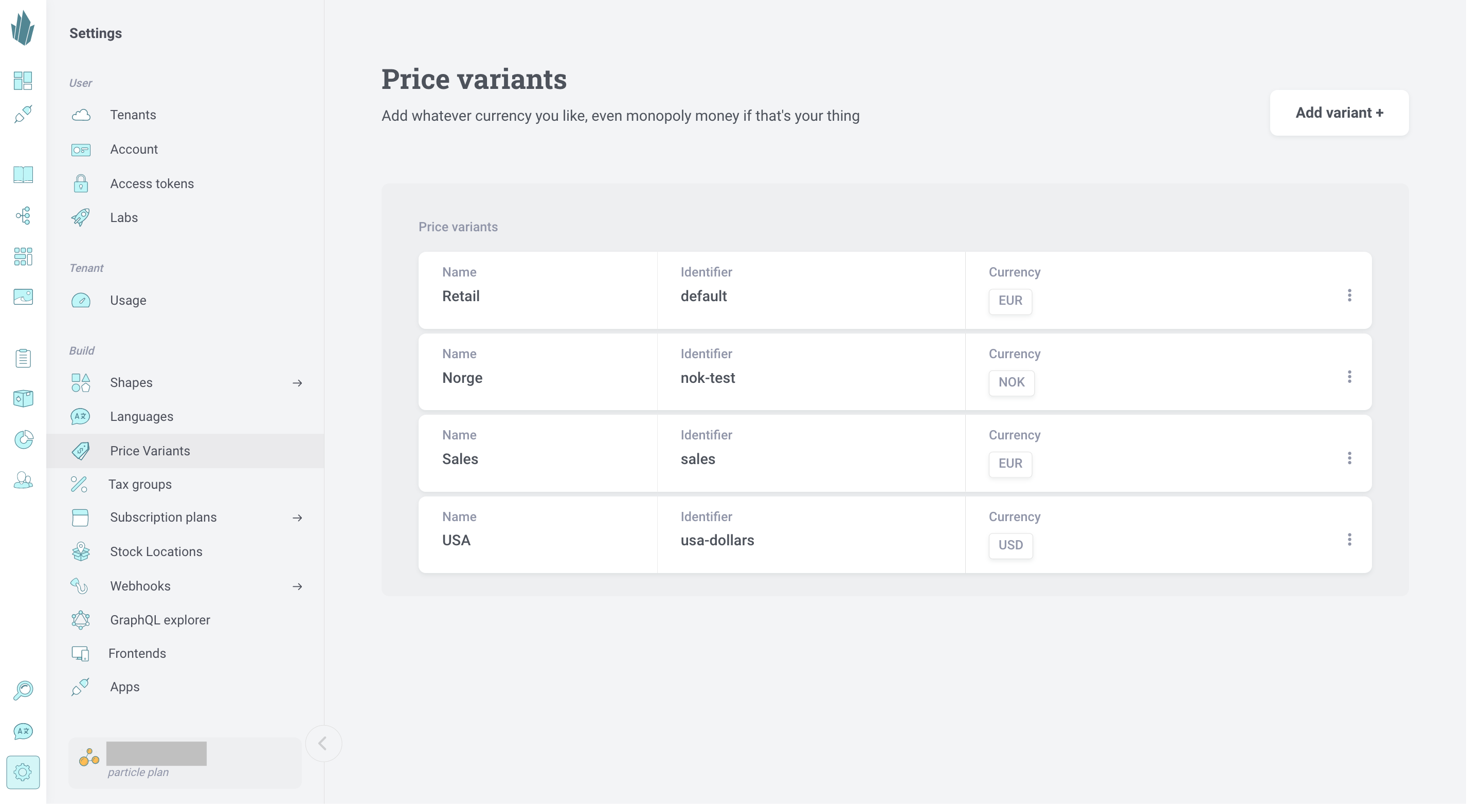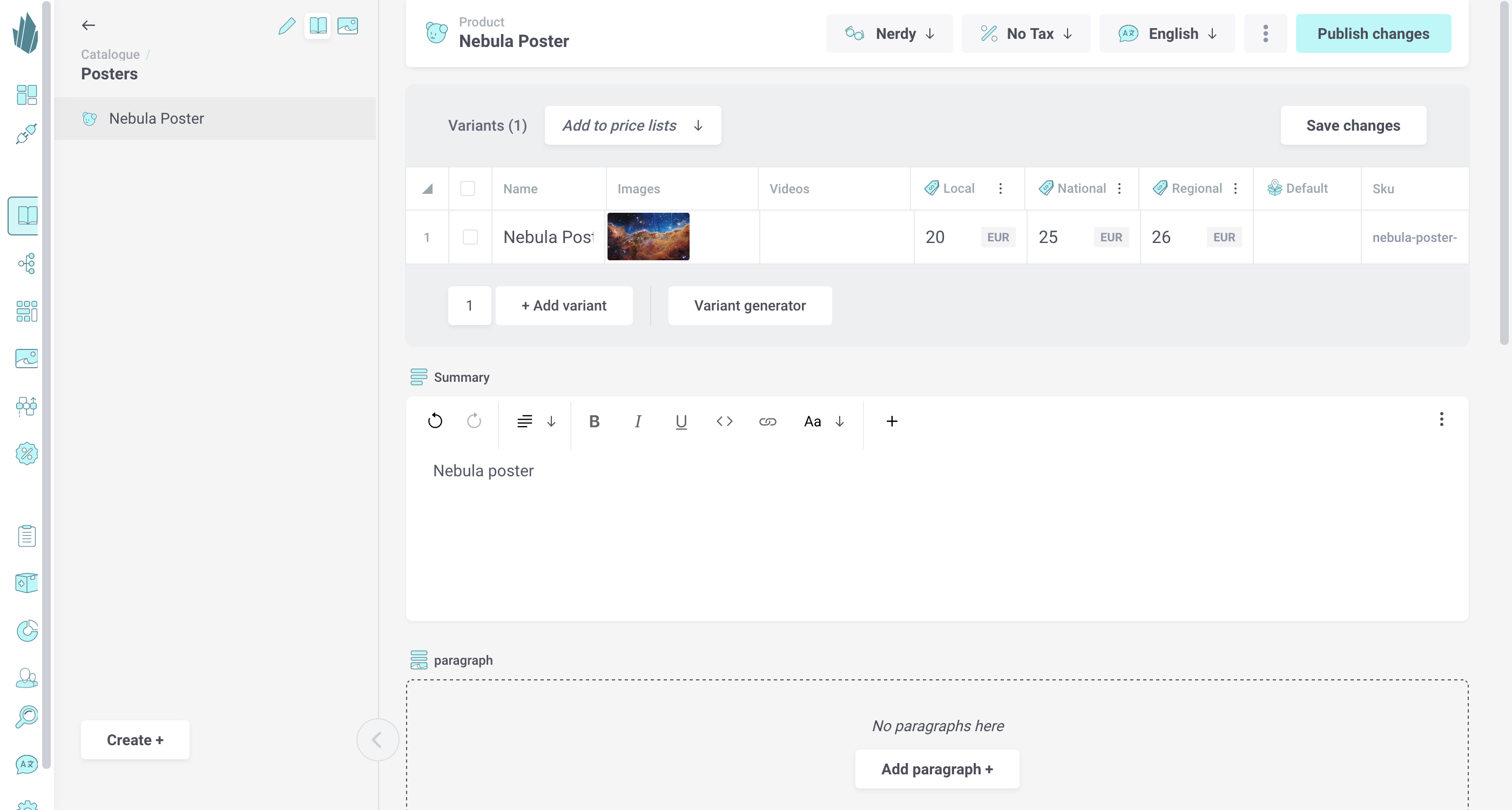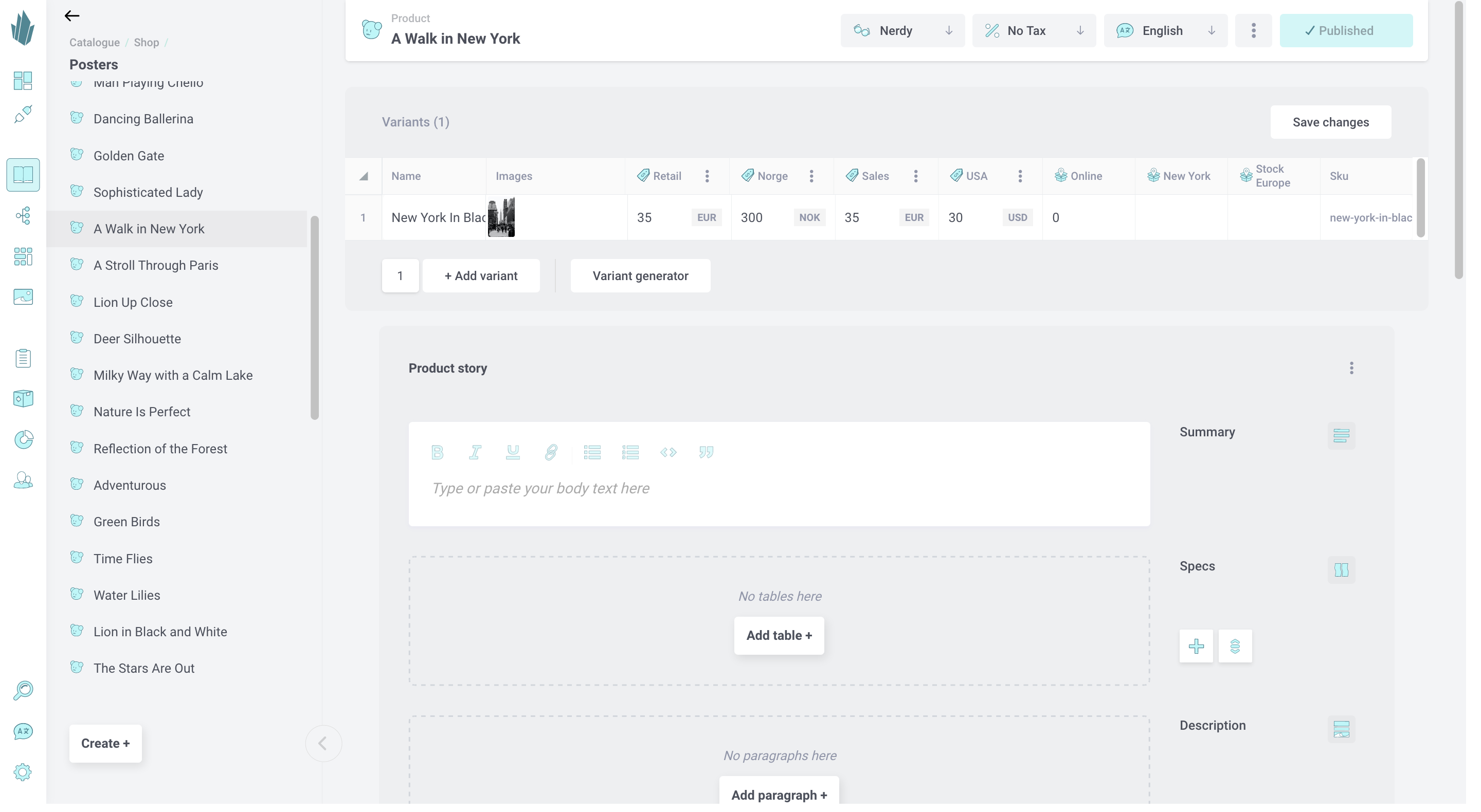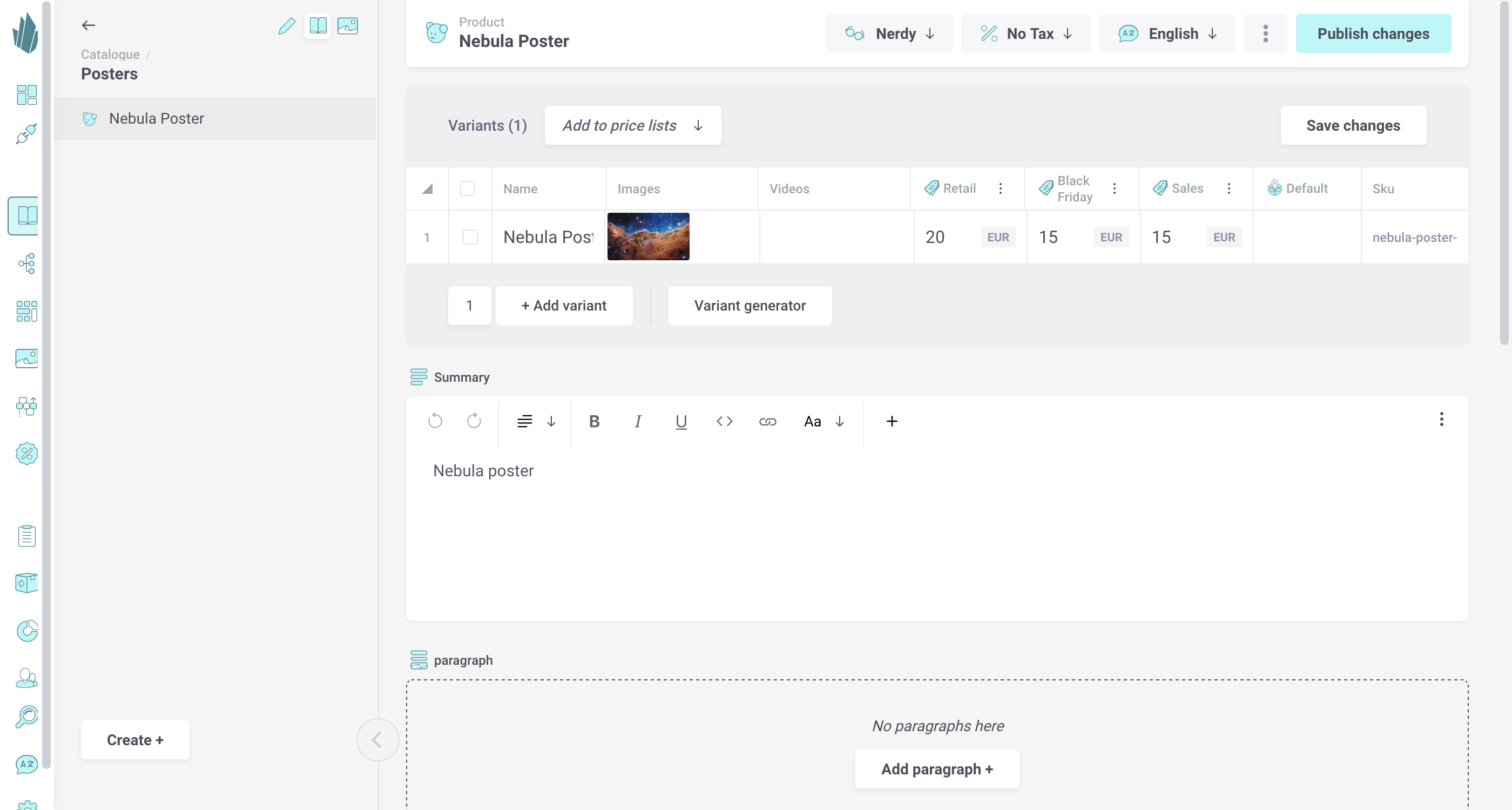B2B Pricing, Multi-currency, and Discounts With Price Variants
Price variants allow you to build a pricing scheme for your products to support B2B, B2C, international multi-currency sales, or discount management. In Crystallize, you define global price variants that apply to all products. The User Guide shows how price variants work.

B2B Pricing
In business-to-business, product prices typically vary based on how much you buy. It is common to have several different price tiers that are given to customers based on their account type.
To differentiate on customer type, you could define a price variant per tier of customers. The grouping of customers will vary based on your business, but consider B2B shops that purchase from a local store, a group of regional stores, or a nationwide group of stores. They would naturally have different volumes, and you might want to differentiate pricing like:
- Local
- Regional
- National
Once the price variants are defined in Crystallize, you can add them to any product. A price variant definition consists of a name, identifier, and currency. This allows you to easily define complex pricing schemes for B2B business scenarios.

Multi-Currency Pricing
When selling products to different markets, you need to handle currency. With price variants in Crystallize, you can define any number of prices and associate a currency with it. For a store that sells from Norway to the EU and globally, you might define prices as follows:
- Local - NOK
- European - EUR
- International - USD
This will give you the flexibility to define the prices for the different markets in the relevant currency. VAT/tax is associated with each product, and for European and international sales, you would disregard the VAT/tax as it is not used for export scenarios.

Discount Pricing
Discounts are often used to create a sense of urgency with customers or to sell out unwanted inventory. Discounts can be used in different ways, but typically you have either time-sensitive pricing like “Black Friday” or a general discount price.
General discount prices are typically used to show labels like “this product is 17% off retail price, while “Black Friday” pricing would be valid for a certain period.
Adding specific price variants to allow for this B2C type of discounts could be modeled in Crystallize as follows:
- Retail
- Sales
- Black Friday
Another way to implement such discounts for set periods of time would be to use Crystallize's price list feature.

